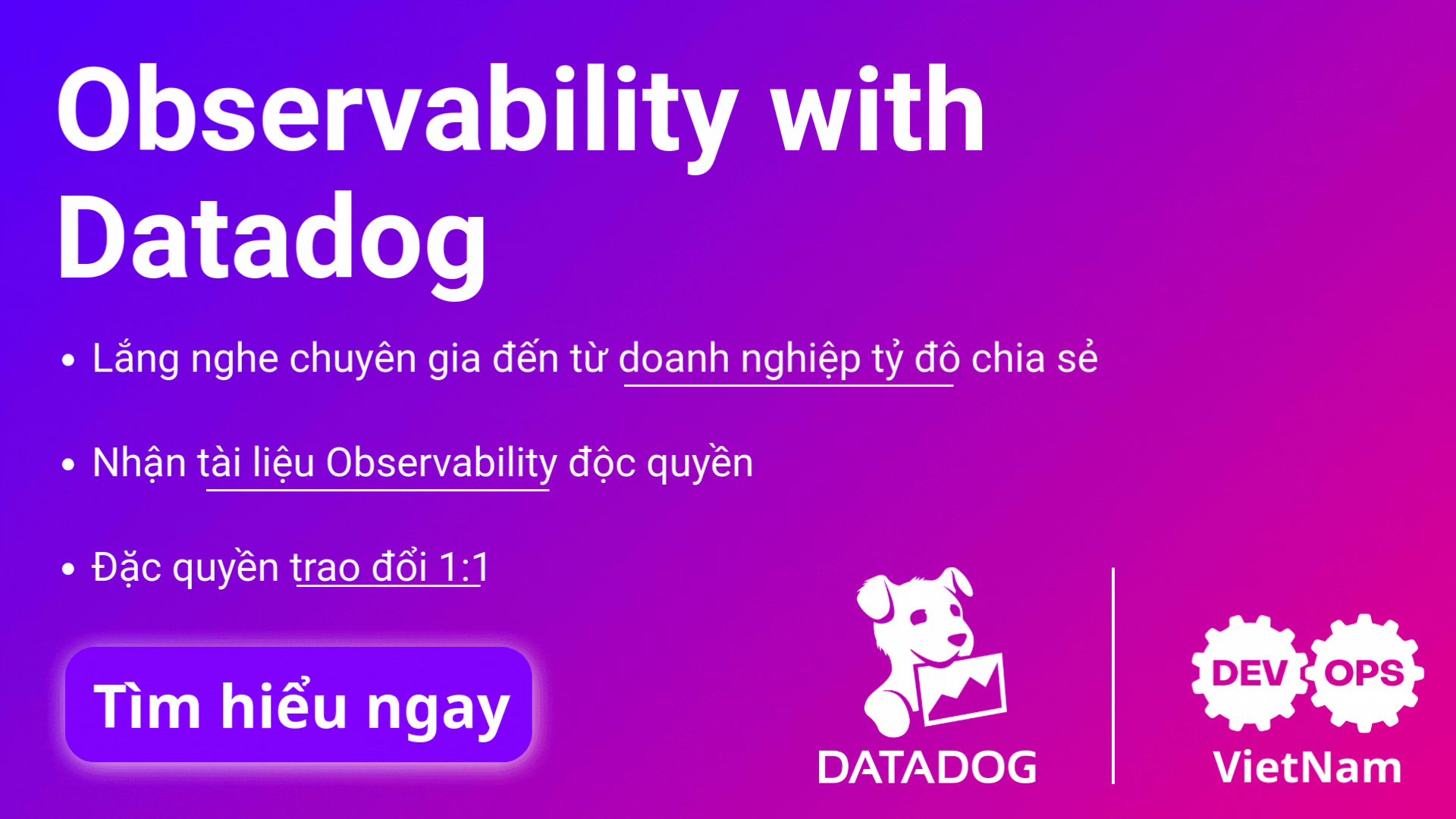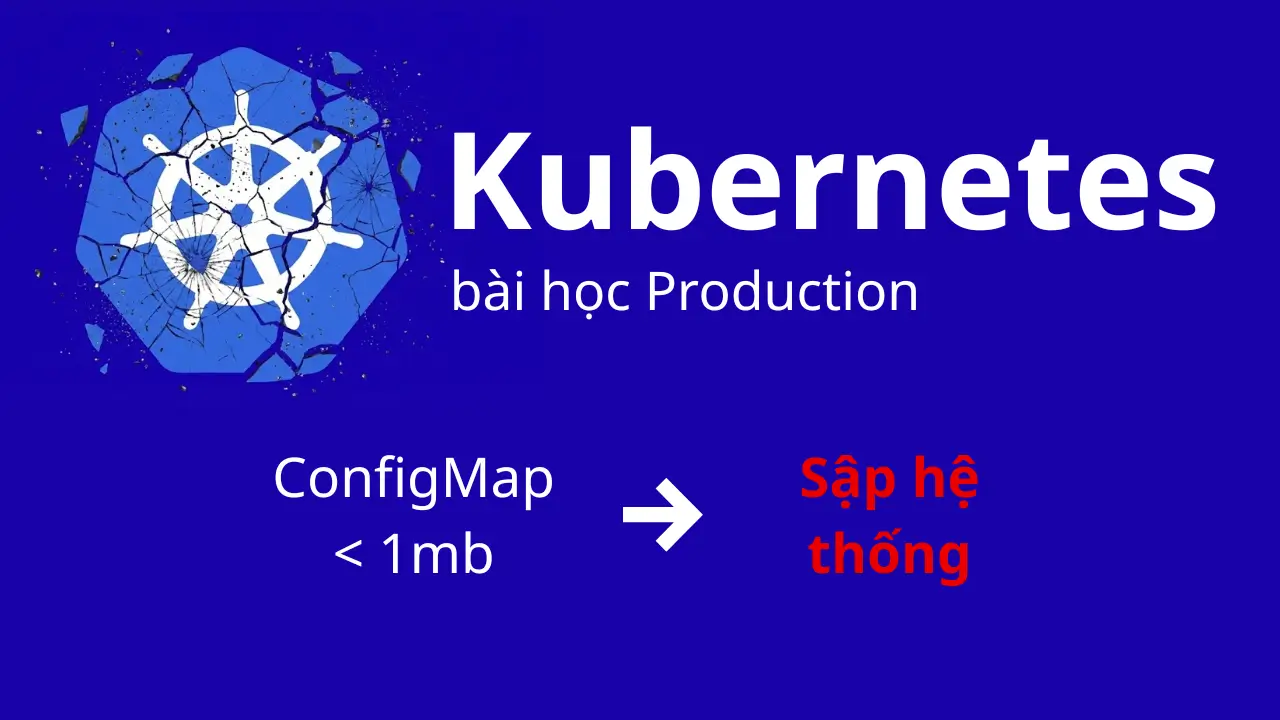Danh sách bài viết trong series Terraform Associate (003)
- Bài 0: Giới Thiệu Series Và Tổng Quan Về Chứng Chỉ Terraform Associate (003)
- Bài 1: Terraform Là Gì? Tổng Quan Và Vai Trò Trong IaC
- Bài 2: Cài Đặt Terraform Trên Các Hệ Điều Hành
- Bài 3: Terraform Workflow: Init, Plan, Apply, Destroy
- Bải 4: Terraform CLI Nâng Cao: Lệnh Taint, Import, Refresh
- Bài 5: Quản Lý Provider Trong Terraform
- Bài 6: Quản Lý Resource Trong Terraform
- Bài 7: Sử Dụng Biến (Variables) Trong Terraform
- Bài 8: Sử Dụng Output Trong Terraform
- Bài 9: Hiểu Terraform State Quản Lý Trạng Thái Hạ Tầng
- Bài 10: Sử Dụng Remote State Với Backend Như S3 Trong Terraform
- Bài 11: Terraform Workspace Quản Lý Nhiều Môi Trường
- Bài 12: Terraform Module: Mô-đun Hóa Cấu Hình
- Bài 13: Terraform Data Sources Truy Vấn Thông Tin Hạ Tầng
- Bài 14: Quản Lý Vòng Đời Tài Nguyên Với Terraform
- Bài 15: Tự Động Hóa Và Tích Hợp CI/CD Với Terraform
- Bài 16: Xử Lý Lỗi Và Debug Trong Terraform
- Bài 17: Tối Ưu Hóa Hiệu Suất Với Terraform
- Bài 18: Bảo Mật Cấu Hình Terraform
- Bài 19: Triển Khai Hạ Tầng Đa Vùng Với Terraform
- Bài 20: Triển Khai Hạ Tầng Serverless Với Terraform
- Bài 21: Triển Khai Hạ Tầng Container Với Terraform (ECS, EKS)
- Bài 22: Triển Khai Hạ Tầng Multi-Cloud Với Terraform
- Bài 23: Tổng Kết Series Và Chuẩn Bị Cho Kỳ Thi Terraform Associate (003)
Output Trong Terraform Là Gì?

Output trong Terraform là các giá trị được định nghĩa để xuất thông tin từ tài nguyên hoặc dữ liệu sau khi triển khai hạ tầng. Output cho phép bạn trích xuất các chi tiết quan trọng, như ID máy ảo, địa chỉ IP công cộng, hoặc tên bucket S3, để sử dụng trong các kịch bản khác hoặc hiển thị cho người dùng. Output được khai báo trong block output trong file .tf và là một phần quan trọng trong việc quản lý và giám sát hạ tầng, một kỹ năng được kiểm tra trong kỳ thi Terraform Associate (003), đặc biệt liên quan đến mục tiêu 7 (Read, Generate, and Modify Configuration).
Vai Trò Của Output Trong Quản Lý Hạ Tầng
Output đóng vai trò quan trọng trong quản lý hạ tầng với Terraform:
- Trích xuất thông tin: Cung cấp thông tin về tài nguyên (VD: IP của EC2) mà không cần kiểm tra thủ công trên console.
- Tích hợp với công cụ khác: Dùng output để truyền thông tin sang các công cụ CI/CD, module khác, hoặc script.
- Giám sát và kiểm tra: Giúp xác nhận trạng thái tài nguyên sau khi áp dụng
terraform apply. - Hỗ trợ nhiều môi trường: Dùng output để quản lý thông tin giữa các môi trường (dev, staging, prod).
Cấu Trúc Và Khai Báo Output
Cú Pháp Cơ Bản Của Output Block
Cú pháp cơ bản của một output block:
output "
<NAME>" {
value =
<EXPRESSION>
description = "
<DESCRIPTION>"
sensitive =
<BOOLEAN>
}- `
`: Tên output, duy nhất trong dự án (VD: `instance_id`). value: Giá trị trích xuất, thường là thuộc tính của resource (VD:aws_instance.web.id).description: Mô tả mục đích của output.sensitive: Đánh dấu output là nhạy cảm (VD: password) để ẩn khi hiển thị.
Các Thuộc Tính Quan Trọng Của Output
- value: Bắt buộc, có thể là thuộc tính resource, biến, hoặc biểu thức (VD:
var.region). - description: Tùy chọn, giúp người dùng hiểu ý nghĩa output.
- sensitive: Tùy chọn, nếu
true, giá trị sẽ bị ẩn trong output (VD:*sensitive value*).
Sử Dụng Output Với Resource
-
File
main.tf(sử dụng với AWS):provider "aws" { region = "us-east-1" access_key = "YOUR_ACCESS_KEY" secret_key = "YOUR_SECRET_KEY" } resource "aws_instance" "web_server" { ami = "ami-0c55b159cbfafe1f0" instance_type = "t2.micro" tags = { Name = "WebServer" } } resource "aws_s3_bucket" "data_bucket" { bucket = "my-unique-bucket-20230518" tags = { Name = "DataBucket" } } output "instance_id" { value = aws_instance.web_server.id description = "The ID of the EC2 instance" } output "instance_public_ip" { value = aws_instance.web_server.public_ip description = "The public IP of the EC2 instance" } output "bucket_name" { value = aws_s3_bucket.data_bucket.bucket description = "The name of the S3 bucket" sensitive = false } - Ý nghĩa: Output trích xuất ID, IP công cộng của EC2, và tên bucket S3.
Truy Xuất Output Sau Khi Triển Khai
Xem Output Qua Lệnh Terraform Output
- Input: Chạy lệnh sau khi
terraform apply.terraform output - Output:
instance_id = "i-1234567890abcdef0" instance_public_ip = "54.123.45.67" bucket_name = "my-unique-bucket-20230518" - Input: Xem output cụ thể.
terraform output instance_public_ip - Output:
54.123.45.67
Lưu Output Vào File
- Input: Lưu output vào file JSON.
terraform output -json > outputs.json - Output file
outputs.json:{ "instance_id": { "value": "i-1234567890abcdef0", "type": "string" }, "instance_public_ip": { "value": "54.123.45.67", "type": "string" }, "bucket_name": { "value": "my-unique-bucket-20230518", "type": "string" } } - Ý nghĩa: Dùng file JSON để tích hợp với script hoặc công cụ khác.
Sử Dụng Output Trong Nhiều Môi Trường
-
File
main.tf(sử dụng biến và output cho nhiều môi trường):variable "environment" { type = string default = "dev" } resource "aws_instance" "web_server" { ami = "ami-0c55b159cbfafe1f0" instance_type = "t2.micro" tags = { Name = "WebServer-${var.environment}" } } output "instance_id_${var.environment}" { value = aws_instance.web_server.id description = "The ID of the EC2 instance in ${var.environment} environment" } - Quy trình:
terraform apply -var "environment=prod" -auto-approve.terraform output: Output:instance_id_prod = "i-0987654321fedcba0"
- Ý nghĩa: Output tự động điều chỉnh theo môi trường.
Ví Dụ Thực Tế: Sử Dụng Output Để Trích Xuất Thông Tin
-
File
variables.tf:variable "region" { type = string description = "AWS region to deploy resources" default = "us-east-1" } variable "instance_count" { type = number description = "Number of EC2 instances" default = 2 } - File
terraform.tfvars:region = "us-east-1" instance_count = 2 -
File
main.tf:provider "aws" { region = var.region access_key = "YOUR_ACCESS_KEY" secret_key = "YOUR_SECRET_KEY" } resource "aws_s3_bucket" "data_bucket" { bucket = "my-unique-bucket-20230518-${var.region}" tags = { Name = "DataBucket-${var.region}" } } resource "aws_instance" "web_server" { count = var.instance_count ami = "ami-0c55b159cbfafe1f0" instance_type = "t2.micro" tags = { Name = "WebServer-${count.index}-${var.region}" } depends_on = [aws_s3_bucket.data_bucket] } output "bucket_name" { value = aws_s3_bucket.data_bucket.bucket description = "The name of the S3 bucket" } output "instance_ids" { value = aws_instance.web_server[*].id description = "The IDs of the EC2 instances" } output "instance_public_ips" { value = aws_instance.web_server[*].public_ip description = "The public IPs of the EC2 instances" } -
Quy trình:
-
terraform init: Output:Initializing provider plugins... - Finding hashicorp/aws versions matching "~> 5.0"... - Installing hashicorp/aws v5.17.0... - Installed hashicorp/aws v5.17.0 (signed by HashiCorp) Terraform has been successfully initialized! -
terraform plan: Output (tóm tắt):Terraform will perform the following actions: # aws_s3_bucket.data_bucket will be created + resource "aws_s3_bucket" "data_bucket" { + bucket = "my-unique-bucket-20230518-us-east-1" + id = (known after apply) } # aws_instance.web_server[0] will be created + resource "aws_instance" "web_server" { + ami = "ami-0c55b159cbfafe1f0" + instance_type = "t2.micro" + tags = { + "Name" = "WebServer-0-us-east-1" } + id = (known after apply) + public_ip = (known after apply) } # aws_instance.web_server[1] will be created + resource "aws_instance" "web_server" { + ami = "ami-0c55b159cbfafe1f0" + instance_type = "t2.micro" + tags = { + "Name" = "WebServer-1-us-east-1" } + id = (known after apply) + public_ip = (known after apply) } Plan: 3 to add, 0 to change, 0 to destroy. -
terraform apply -auto-approve: Output:aws_s3_bucket.data_bucket: Creating... aws_s3_bucket.data_bucket: Creation complete after 5s [id=my-unique-bucket-20230518-us-east-1] aws_instance.web_server[0]: Creating... aws_instance.web_server[1]: Creating... aws_instance.web_server[0]: Creation complete after 45s [id=i-0abcdef123456789] aws_instance.web_server[1]: Creation complete after 45s [id=i-1abcdef123456789] Apply complete! Resources: 3 added, 0 changed, 0 destroyed. Outputs: bucket_name = "my-unique-bucket-20230518-us-east-1" instance_ids = [ "i-0abcdef123456789", "i-1abcdef123456789" ] instance_public_ips = [ "54.123.45.67", "54.123.45.68" ] terraform output -json > outputs.json: Output fileoutputs.json:{ "bucket_name": { "value": "my-unique-bucket-20230518-us-east-1", "type": "string" }, "instance_ids": { "value": ["i-0abcdef123456789", "i-1abcdef123456789"], "type": "list" }, "instance_public_ips": { "value": ["54.123.45.67", "54.123.45.68"], "type": "list" } }
-
Lưu Ý Quan Trọng Khi Sử Dụng Output
- Giá trị nhạy cảm: Đánh dấu
sensitive = truecho output chứa thông tin nhạy cảm (VD: mật khẩu) để tránh hiển thị. - Kiểm tra tính khả dụng: Chỉ trích xuất thuộc tính đã sẵn sàng (VD:
public_ipchỉ có sau khi instance được tạo). - Tên output rõ ràng: Đặt tên mô tả (VD:
instance_public_ipthay vìip) để dễ hiểu. - Sao lưu state: File
terraform.tfstatechứa thông tin output, sao lưu trước khi thay đổi cấu hình. - Lỗi truy xuất: Nếu
terraform outputbáo lỗi (VD: “Output not found”), kiểm tra tên output hoặc chạyterraform applylại.
Liên Hệ Với Chứng Chỉ Terraform Associate (003)
Kỳ thi Terraform Associate (003) kiểm tra khả năng sử dụng output. Bạn cần nắm:
- Câu hỏi mẫu:
- “Lệnh nào dùng để xem output sau khi áp dụng?”
Đáp án:terraform output. - “Cách khai báo output trích xuất ID của resource là gì?”
Đáp án:output "name" { value = aws_instance.example.id }. - “Output nhạy cảm sẽ hiển thị như thế nào?”
Đáp án:*sensitive value*nếusensitive = true.
- “Lệnh nào dùng để xem output sau khi áp dụng?”
- Thực hành: Kỳ thi có thể yêu cầu nhận diện cấu hình output hoặc dự đoán output khi áp dụng resource.
Kết Luận
Sử dụng output trong Terraform giúp trích xuất thông tin tài nguyên một cách hiệu quả, hỗ trợ quản lý và giám sát hạ tầng. Hiểu cách khai báo, truy xuất, và thực hành với ví dụ thực tế sẽ giúp bạn tự tin thi đỗ Terraform Associate (003). Ở bài tiếp theo, chúng ta sẽ tìm hiểu cách hiểu và quản lý Terraform State.




















